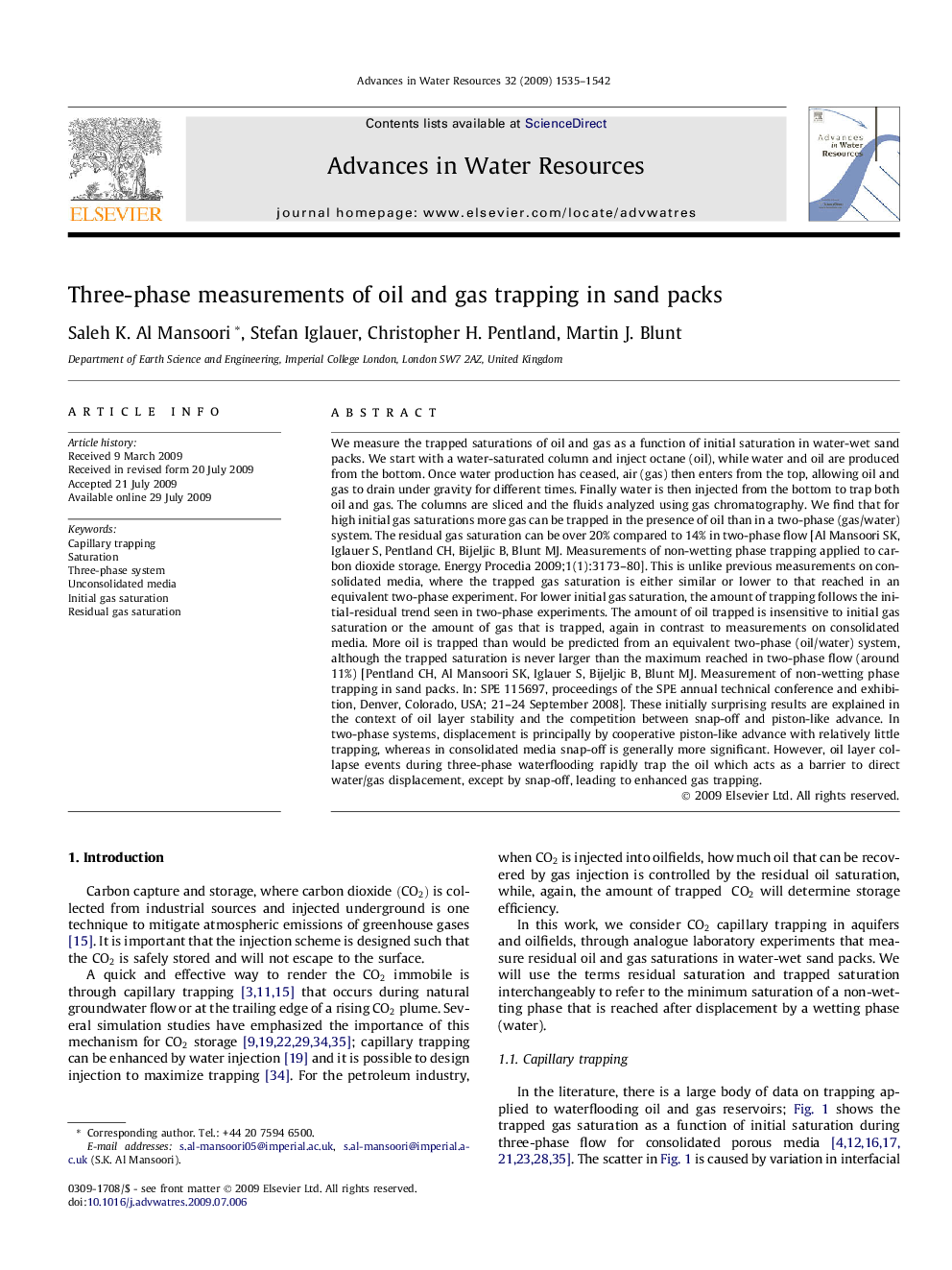| کد مقاله | کد نشریه | سال انتشار | مقاله انگلیسی | نسخه تمام متن |
|---|---|---|---|---|
| 4526484 | 1323839 | 2009 | 8 صفحه PDF | دانلود رایگان |

We measure the trapped saturations of oil and gas as a function of initial saturation in water-wet sand packs. We start with a water-saturated column and inject octane (oil), while water and oil are produced from the bottom. Once water production has ceased, air (gas) then enters from the top, allowing oil and gas to drain under gravity for different times. Finally water is then injected from the bottom to trap both oil and gas. The columns are sliced and the fluids analyzed using gas chromatography. We find that for high initial gas saturations more gas can be trapped in the presence of oil than in a two-phase (gas/water) system. The residual gas saturation can be over 20% compared to 14% in two-phase flow [Al Mansoori SK, Iglauer S, Pentland CH, Bijeljic B, Blunt MJ. Measurements of non-wetting phase trapping applied to carbon dioxide storage. Energy Procedia 2009;1(1):3173–80]. This is unlike previous measurements on consolidated media, where the trapped gas saturation is either similar or lower to that reached in an equivalent two-phase experiment. For lower initial gas saturation, the amount of trapping follows the initial-residual trend seen in two-phase experiments. The amount of oil trapped is insensitive to initial gas saturation or the amount of gas that is trapped, again in contrast to measurements on consolidated media. More oil is trapped than would be predicted from an equivalent two-phase (oil/water) system, although the trapped saturation is never larger than the maximum reached in two-phase flow (around 11%) [Pentland CH, Al Mansoori SK, Iglauer S, Bijeljic B, Blunt MJ. Measurement of non-wetting phase trapping in sand packs. In: SPE 115697, proceedings of the SPE annual technical conference and exhibition, Denver, Colorado, USA; 21–24 September 2008]. These initially surprising results are explained in the context of oil layer stability and the competition between snap-off and piston-like advance. In two-phase systems, displacement is principally by cooperative piston-like advance with relatively little trapping, whereas in consolidated media snap-off is generally more significant. However, oil layer collapse events during three-phase waterflooding rapidly trap the oil which acts as a barrier to direct water/gas displacement, except by snap-off, leading to enhanced gas trapping.
Journal: Advances in Water Resources - Volume 32, Issue 10, October 2009, Pages 1535–1542